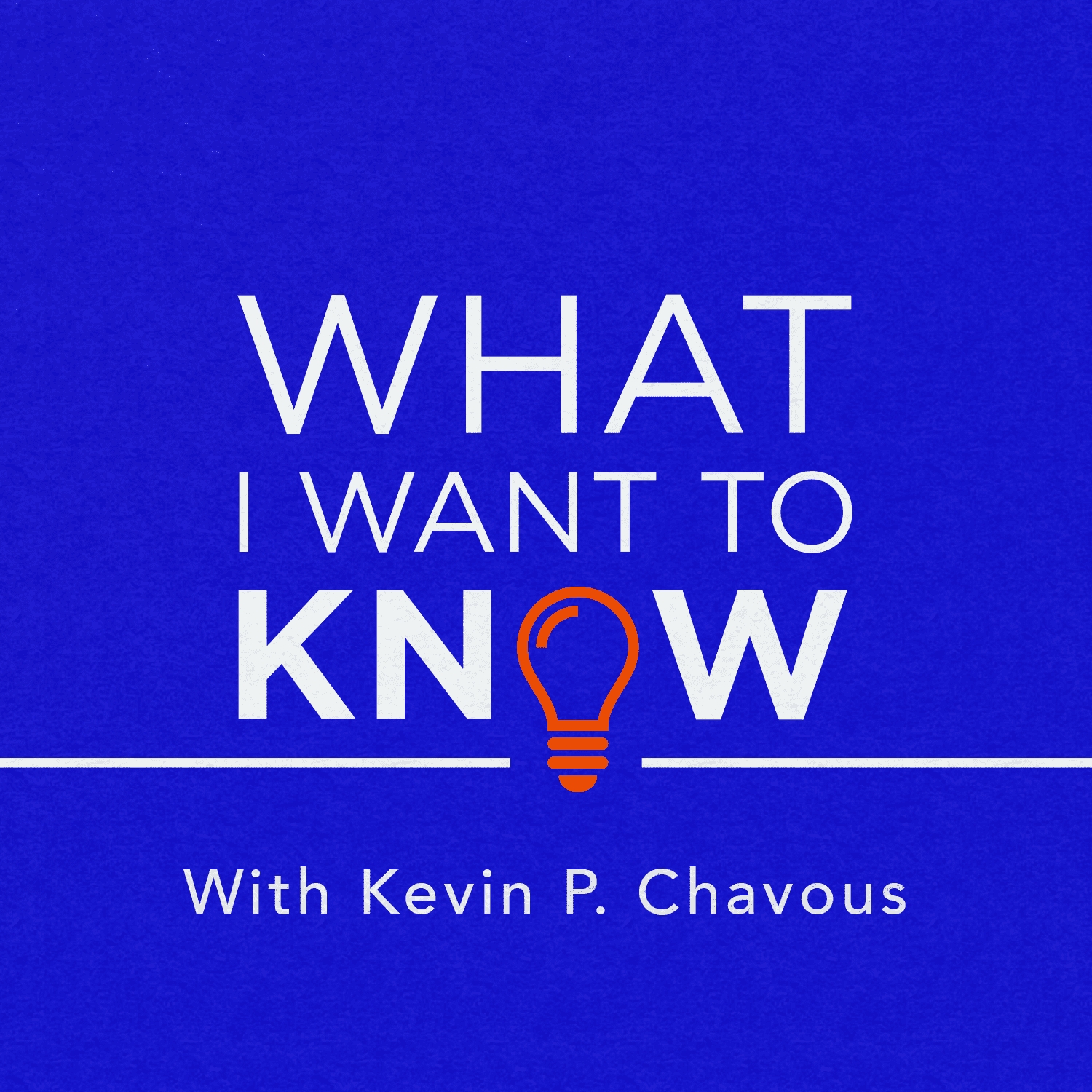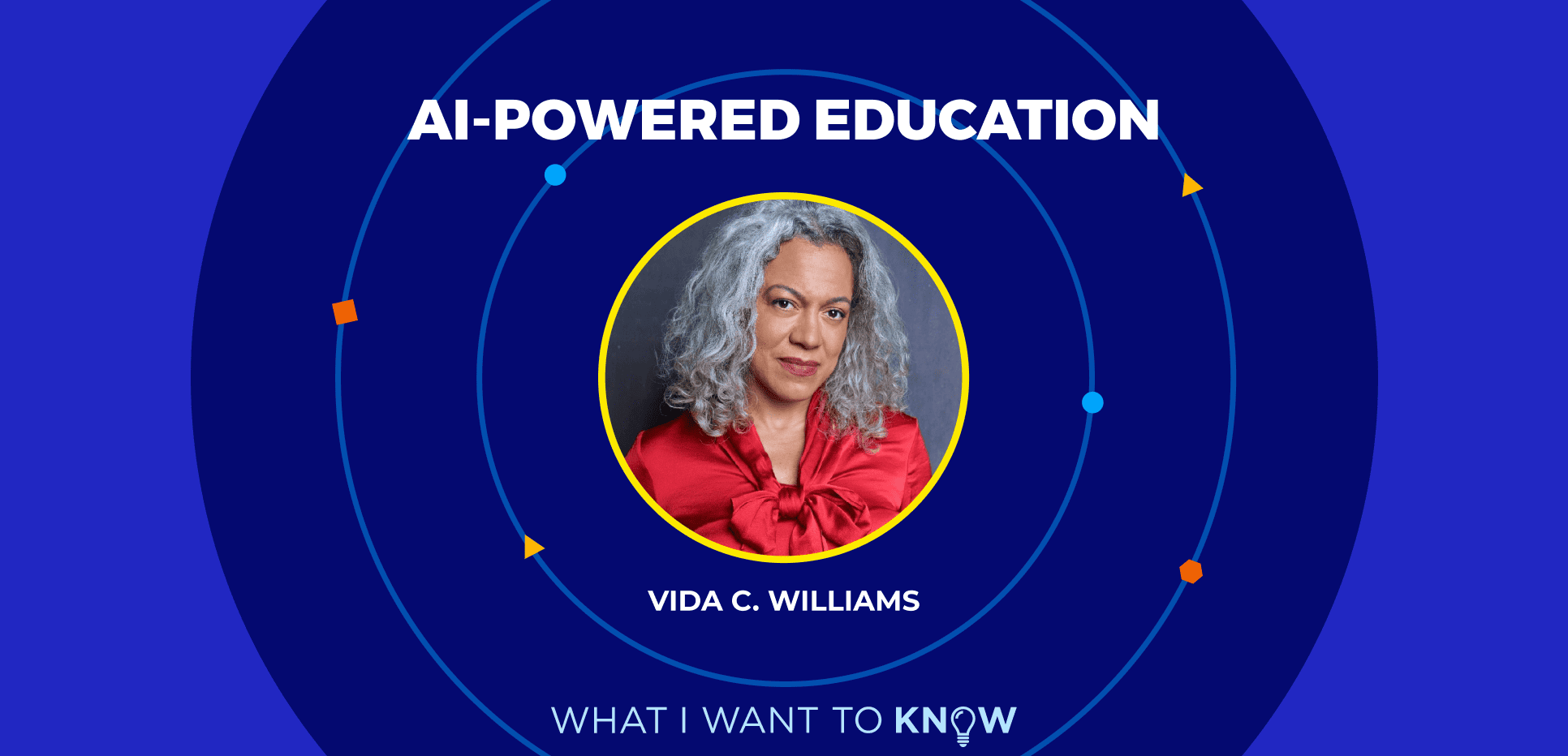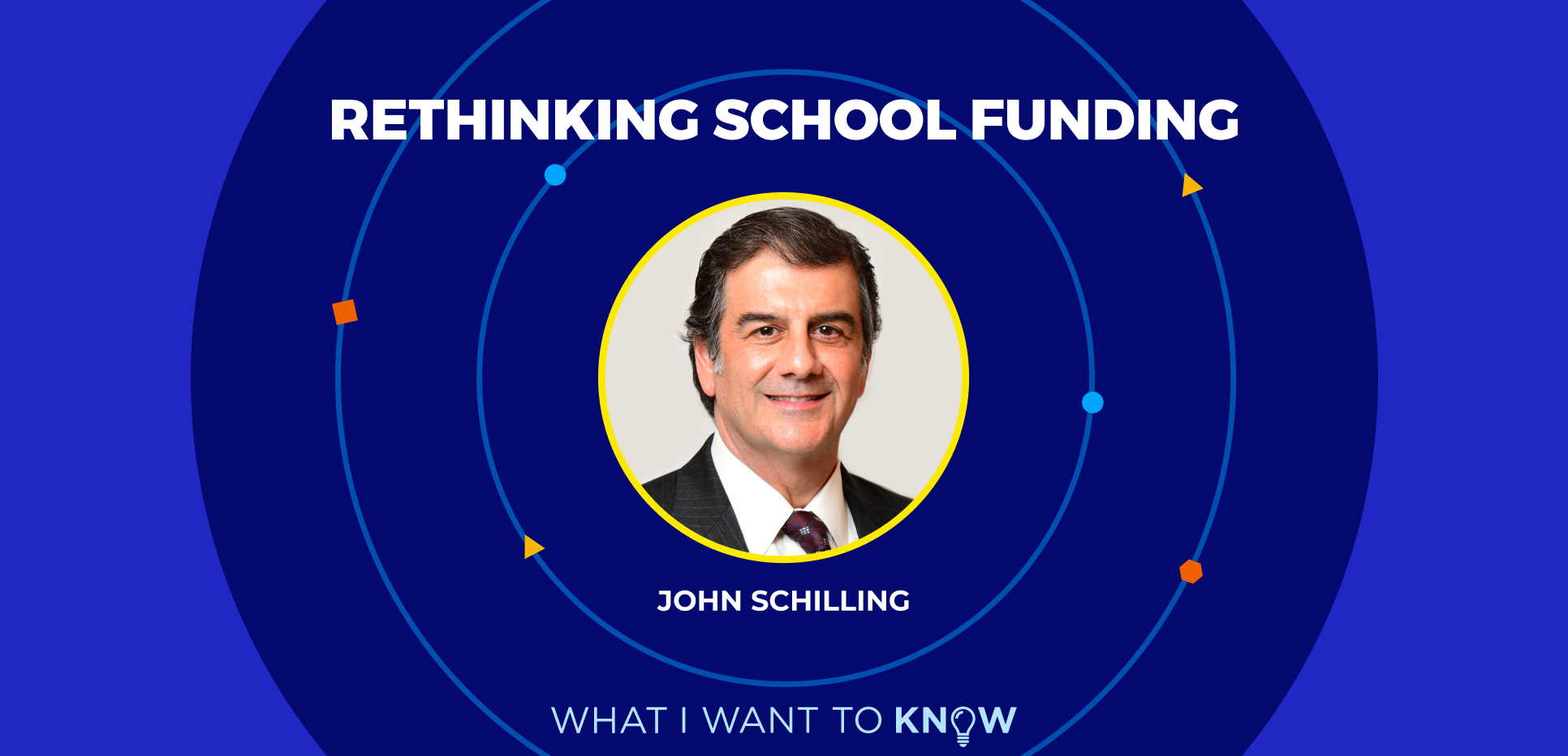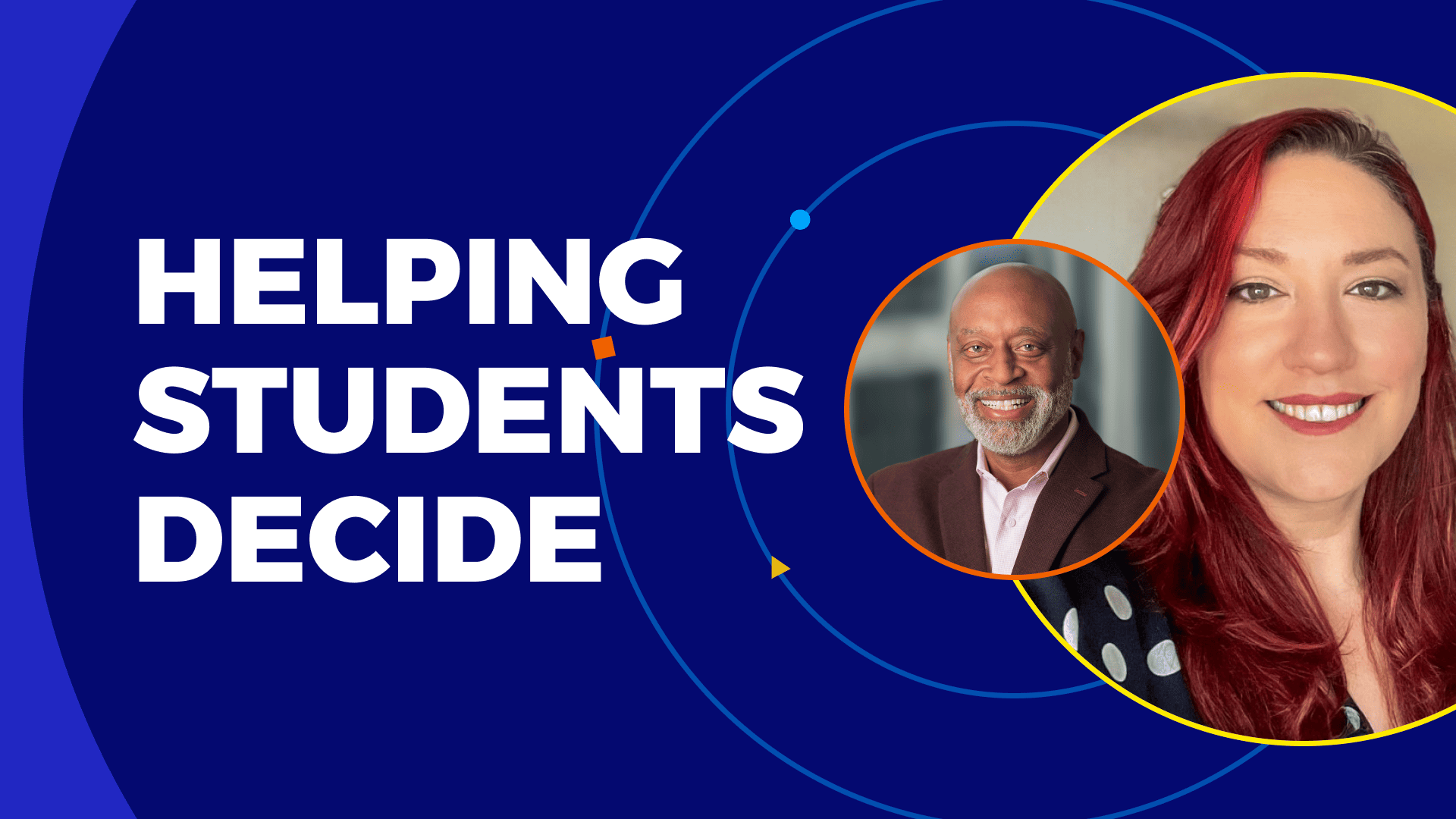Even before the COVID-19 pandemic, schools across the U.S. were cutting back on arts education. However, studies have shown that students with arts included in their core curriculum see improvements in reading and math and experience lower suspension and dropout rates.
Why is it essential for students to be exposed to art and culture? What kind of impact does it have on their learning? How can educators use online platforms to immerse their students in art and culture?
In this episode, Kevin discusses the possibilities of arts education with tech with the founder and director of Open-ended Design, Suhair Khan.
Listen to the Full Audio
Listen on: Apple Podcast, Spotify
Transcript
Kevin: Even before the COVID-19 pandemic, schools across the U.S. were cutting back on arts education. However, studies have shown that students who have the arts included in the core curriculum not only see improvements in reading and math but also experience lower suspension and dropout rates. Why is it important for students to be exposed to art and culture? What kind of impact does it have on their learning? And how can educators use online platforms to immerse their students in art and culture?
Kevin: This is What I Want to Know, and today I’m joined by Suhair Khan to find out. Suhair Khan is the founder and director of open-ended design, a nonprofit platform that supports artists, designers, and creative technologists. She previously worked for over a decade at Google, where she led teams around the world in initiatives merging technology with arts, culture and design. She joins us today to discuss the impact arts and innovation can have in the classroom. Suhair, welcome to the show.
Suhair: Thank you for having me, Kevin.
Kevin: You’ve had such a fascinating career in technology and creative design. Did you always have this interest in the arts?
Suhair: I consider myself to be a technologist. That’s been my field for the majority of my career, and I’ve been with Google for a large part of it. But I have been really lucky to be able to explore my passions through my job and through my work. And it is true. I mean, I’ve had an interest in involvement with art and culture for a long part of my career, and fashion, and had the freedom and flexibility to explore that both within my job and outside of it. My mom runs an art gallery in Pakistan. That’s where she’s based. So she works with contemporary artists that explore issues of politics, society, gender, whatever else, through art, mixed media. And my younger sister is a curator, so she worked at the big art gallery. She worked at Sotheby’s, and she curated a pavilion at the Venice Biennale a few years ago.
Kevin: Oh, wow.
Suhair: And then I have writers and poets throughout my family, but I never wanted to be the art person. It was always other people’s thing. So I have sort of resisted it throughout my career because I wanted to be the one focused on what I said I was focused on, which was technology, international development. I’ve actually worked on education and tech specifically. So it’s been a gift to have that as part of my life and to keep getting drawn back to it. And I think working at a company like Google, as I did for a long time, allowed me that freedom, which other jobs wouldn’t have done.
Kevin: Part of your exploration though, as I understand it, was you did a lot of writing and traveling and talked about arts, culture and design. What did you learn?
Suhair: So I think it changes everything. We’re talking about education and what does it mean to learn and to experience and to ask questions and to have conversations. And so, for me, both through my work and through my writing and engagement with the arts, I’m now on various boards of cultural institutions, museums, et cetera, and I teach; everything is not linear. And I think the second you’re involved in any kind of practice within an organization or by yourself that feels linear, you’re learning a little bit less, and you’re questioning a little bit less. So I’ve grown up in Italy, in London; I lived in Pakistan; I went to university in the U.S. and had the opportunity to explore cultures both through museums and cultural institutions, but also the basics; food, language, other people, community. And of course that expands your view of the world, and it makes you see yourself differently and ask different questions of other people.
And that’s a privilege that is going to be harder and harder as we confront what happens with borders, with geographies; we’ve just been through a pandemic. And we have the opportunity, of course, with the internet to expand our worlds. But I think that there is a generation that’s going to experience a different kind of working life. So, for me, it’s been really about expanding my perspective on what does it mean to appreciate other people’s opinions and point of view, and then how you can channel that, or you can at least try or attempt to channel it through your own work. And in this case, for me, it’s been mostly through tech.
Kevin: I love the fact that you talked about how things really are not linear or the best experience and exposure is when you don’t look at things in a linear way. And yet you still worked in structured professions like investment banking and the like. But ultimately you ended up at Google. How did you get to Google, and did your experience in these other worlds solidify your view that you needed to broaden your work experience?
Suhair: My first job was looking at equity derivatives and convertible debt, which are very structured. And in terms of how I transitioned out of that, I ended up doing my master’s at Harvard at the Kennedy School in international development. Having grown up in emerging markets, I was very interested in where economics and policy could be used to help to alleviate economic differences. But in the course of learning more about what I knew about development and aid and investment in less developed countries and economies, I felt more and more strongly that actually giving money away wasn’t necessarily where I thought the most difference could be made. And so I transitioned into a career in technology at a time where technology was, where ideas and dreams and inspiration were really evolving and emanating. This is 12, 13 years ago, and ended up moving to California soon after leaving Harvard.
And then the rest became a very surprising career at an organization that was very much at the forefront of nurturing diverse talent and diverse education and channeling people’s passion and enthusiasm for change in innovation into their work, which I think is really smart. And Google will always value innovation and ideas in a way that a lot of organizations won’t. And after banking, of course, there’s just incredible amounts of freedom and the room to be creative and to explore new ideas in a way that I wonder might not be the case with a lot of these companies in the next few years as things become harder economically all over the world.
Kevin: Yeah. I don’t want to go too far into this, but I’m struck by this reality that you face where you thought you wanted to go to the World Bank, work with development companies, but as you phrased it, this idea of just giving money away doesn’t necessarily solve the problem. And I find that one of the traditional, for lack of a better description, old school approaches to world problem solving is to put money to a problem without building internal human capacity and infrastructure so that people are able to really do for themselves.
Suhair: Yeah, it’s such an interesting time to even have this conversation because inequality is greater than it’s ever been. And also it’s a lot more visible, I think, because of digital platforms and technologies, but also because it is visible in places where we live in big cities around the world. So I think, at the core of it, I have this belief that technology is hopeful and innovation is positive. We’re always looking to solve problems and to create outcomes and solutions that are generative, which is the opposite of giving money away. And I think with Google I started off in California; I was very lucky. I got to work on Google X and new strategy, new business plans for very early-stage products. But I moved, actually, to Singapore to work on our emerging markets teams, specifically because our emerging markets teams were building products that empowered the population of the world that was coming onto the smartphone for the very first time.
And for me, that presented this opportunity to say, “Technologies are empowering people,” or could empower people, “to make choices in how they move money around, how they communicate, how they connect, how they search for things, how they build businesses.” Everything from Google Maps to Google Search to how YouTube was buffering on the phone with low internet speeds to really considering how people pay and transact in economies that are less developed.
And so for me, it became this process of thinking about: I do care about how we use these tools to bridge a divide, but in a way that’s not condescending, that’s actually empowering, that allows people to own their own narrative. But at the end of the day, if you’re not listening, if you’re not thinking across discipline, if you’re so siloed in imagining that the best engineers and the best scientists and the best computer coders cannot possibly be wrong, and that laws are stacked to hold you back from innovation and not actually to create a safer, more equitable, I guess, forum for innovation. So I think we’re at this inflection point where, in tech in particular, we need to be considering values.
Kevin: Yeah. And you used the word that I use often, and we are at an inflection point. And while a lot of the things you said I totally agree with, and it’s true, we also have to focus on the basics. And that’s why we do this show on education, teaching and learning. We have a lot of school leaders, superintendents, school district leaders and parents that listen to us. And this idea of understanding the basics also means that when you’re reflecting on what teaching and learning looks like in the future, it is more than just the mechanics of reading and writing, but it’s also the critical thinking and how you apply that and how you instill those values in the learning process that make students ultimately productive citizens.
And that’s why I wanted to talk with you about arts and education, because it seems as if in our zeal to catch up, to create students that are reading at grade level, because most do not, that we have shoved aside those things that contribute to the whole educational experience of children, like arts and education. So let’s talk about that. Why is that important? Because many school district leaders will say, many who watch this show, they will say, “Well, we don’t have the money to invest in arts, in music, even in physical education or extracurricular activities. We have to double down on reading and writing skills, tutoring, math programs, reading programs that work.”
Suhair: To your point, actually, just coming down to the basics, what does it mean to learn and to have an education? What does it mean to feel safe? To feel like you are being respected, you’re being valued and inspired? And the truth of it all is: I can be super tactical and practical and say something that will be dated in a few months, but if you look at how AI is evolving and, for me, artificial intelligence is going to shape, of course, the future of creativity in a lot of ways. But also it’s shaping our lives. It shapes how you and I make decisions, how we think. We have multiple layers of consciousness right now in our heads because of things like artificial intelligence. If you consider how AI and technologies that are being developed right now are going to take away from jobs, from the opportunities for employment for a whole generation of young people, you have to remember that the one advantage that we have as a conscious species is critical thinking…
Kevin: Yes.
Suhair: … Empathy, kindness, community, connection: things that, of course, Facebook doesn’t create. And how do you build that? It is through education, and it’s through creating spaces that allow young people to feel confident and safe in asking questions of the world around them. And if you’re not being able to connect from one subject to another, if you’re sitting and learning by heart an algebra formula, I don’t know, whatever it is, which is actually not a bad use probably of building new kinds of neural networks, then you’re not really learning and you’re not being judged on your ability to think outside of just getting grades for a particular subject. So this is not a phenomenon that’s just happening in the U.S.; it’s happening across the Western world. Arts education doesn’t even exist in so many different countries, and it’s something that is the greatest loss, I think.
So I think fundamentally, to come down to it, let’s take laptops and Chromebooks and tablets to schools and allow kids to be better connected. Allow teachers to organize lessons and learning in a better way. But that’s not really where innovation is going to come from learning. Innovation is going to come from really considering how young people are able to move across disciplines in a way that feels seamless and where they’re empowered and they can own what they’re doing. The most intelligent people that I’ve worked with are called creative technologists. They’re coders who work with art, design, architecture. They consider how to bridge different roles by using the skill of coding, which they have. And they’re able to think both laterally and vertically in terms of bringing the idea of an artist to life, considering a large data set and how it might be useful for a museum director.
They sit across different roles, and they’re able to see things that are really where the boundaries of imagination and reality come together. And there is this moment that we’re existing in which young people have access to because they have access to technology, phones, social media, they’re learning coding. But if they’re not able to deploy an imagination, to imagine different roles, to consider that being creative means to come up with your own ideas and to have your own point of view, then we’re going to lose a whole generation of people who might have an opinion that is formed by all of these different areas. I am on an advisory board for the British Library, for a theater company called Sadler’s Wells, for the Design Museum. Each of these institutions has been separately impacted by funding cuts in the arts. These institutions have major learning programs.
Education is not just going to school; it’s engaging with these kinds of programs where they go to local communities and you teach modern dance choreography to young people, who would never consider even going to the ballet, and now have the chance to consider a career where their body becomes their tool, where physical intelligence is their practice. And with this funding being cut, that’s not going to happen. These afterschool programs are not going to exist. So I think it’s not just about where money is going; it’s about the values of societies.
Are we really going to stop valuing creativity as a way of expressing intelligence? And if that is going to happen, then how are we going to produce a generation of young people who are going to compete with artificial intelligence in doing their jobs? Because if we have a generation of linear thinkers, those jobs can very easily be taken away and dismantled by tools that are being developed very rapidly right now and are going to then either jobs going, let’s say to other countries, other regions, but more importantly, taking away from actual innovation in the long term, which is going to need a lot more creativity. And it’s not just about having artists come out of it; it’s about people who can really switch the way they think because careers are going to be a lot more flexible and malleable also, I think, as we go forward.
Kevin: Along those lines, let me ask you about open-ended design. That’s the nonprofit that you have put together. Talk about that group and that organization and what you’re doing.
Suhair: Sure. So I started to teach at a university in London called Central St. Martins a few years ago in the Masters of Architecture program on technology and design. And I realized through the course of it how many people are engaged in the space, how many people of, let’s say, my generation, younger, were working with technical skills: architects, scientists, computer coders, but across disciplines, being creative in how they were doing their work, but also considering positive impact to the environment, to society. So I started open-ended as almost a learning from this as wanting to platform people around the world who are working across disciplines with a lens on positive impact, and of course, engaging with young people from diverse backgrounds. And I wanted to make sure that I was working to open up their voices and to create a community of people who felt similarly and worked similarly in a way that wasn’t possible at the time. So open-ended design has now actually evolved, and we are an incubator and a laboratory for where technology and creativity come together.
Kevin: I mean, Suhair, that’s really good stuff. And I love the idea of the cross-fertilization between multiple generations, multiethnic and socioeconomic groups. The communication and exposure are so important, and often it is far too stilted than it should be. So I have one last question. This is what I really want to know, and it’s really tailored toward those school leaders and superintendents here in the States that may be listening. Let’s say that a school district leader does support and has values and a vision that include integrating more culture and more arts in their curriculum. They’re under a lot of financial pressure from the overseers, school board, mayor, whomever. What would you recommend to them as the best way for them to marry their vision with the pragmatic realities they face every day?
Suhair: Fine arts. Culture can be everything from food to architecture to tradition, language. And so I think we are at a moment where we need to think really about this; this is a baseline, what matters to a community and to build solutions around that. And I don’t discount the pressure, mostly financial, but also, what does it mean to educate your child? You want them to make a good salary and to do well in life and just to take care of themselves and their family. And I think this is a moment where there probably needs to be a lot more consideration of what is the kind of student or graduate that you want to come out of a program. You want somebody who has empathy, who can ask good questions, who can probably be kind to others at a time when things are moving so quickly and feel challenging.
I think because we have access to digital technologies, if I was running a school or a school system, I would be using that as a starting point. I mean, we’ve talked about Google Arts & Culture. It’s absolutely free; there’s no advertising on the platform. It’s really meant to democratize access to everything from museums to art collections, archeological sites, the history of science and innovation across time, fashion as culture, and it sits in the palm of your hand. And what I think is fantastic about the tool is that it’s very chaotic. It’s actually designed in a way that’s extremely stressful to navigate. There’s augmented reality and machine learning experiments and all this stuff that is slapped in, but actually that allows for individual explorations. You never know where you might end up. And so, I think using these tools there are millions of tools; the Met Museum has their entire collection, open source on the internet.
And similarly, from all over the world, there are platforms that are, especially after COVID, more and more beautifully designed, well curated, that will allow young people to find and make their own opinion on what culture and creativity might mean for themselves. And I think really engaging with those as absolutely free tools … The only cost that’s going to exist is the time of the students and the time of the teachers, really frankly, and is in valuing the fact that giving them the time to be creative, to explore new stories, new cultures in ways that are both immersive we’re talking a lot of, course, these days about the metaverse, but equally as much about learning, reading, connecting, having conversations with one another will matter more than ever.
Kevin: Yeah, very well said. I love that answer. And Suhair Khan, I really appreciate you joining us today on What I Want to Know.
Suhair: Oh, such a pleasure. Thank you, Kevin.
Kevin: Thanks for listening to What I Want to Know. Be sure to follow and subscribe to the show on Apple Podcast, Spotify or your favorite podcast app so you can explore other episodes and dive into our discussions on the future of education. And write a review of the show. I also encourage you to join the conversation and let me know what you want to know using #WIWTK on social media. That’s #WIWTK. For more information on Stride and online education, visit stridelearning.com. I’m your host, Kevin P. Chavous. Thank you for joining What I Want to Know.
Meet Suhair
Suhair Khan is the founder and director of Open-Ended Design, a nonprofit platform that supports artists, designers, and creative technologists. She previously worked for more than a decade at Google, where she led global initiatives in merging technology with arts, culture, and design.






